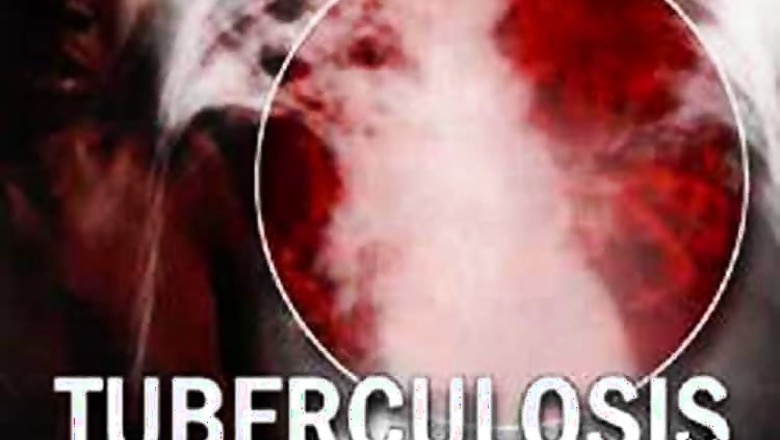
views
Tuberculosis (TB) is an infectious disease caused by a bacterium--Mycobacterium tuberculosis. It is spread through the air by a person suffering from Pulmonary TB. A single patient can infect 10 or more people in a year. More adults die from TB than from any other infectious disease in India —more than 1,000 every day, more than 400,000 every year. World Health Organization (WHO) statistics for 2010 give an estimated incidence figure of 2.5 million cases of TB for India, the highest in the world.
According to Wikipedia, an airborne disease is any disease that is caused by pathogens and transmitted through the air. The relevant pathogens may be viruses, bacteria, or fungi, and they may be spread through coughing, sneezing, raising of dust, spraying of liquids, or similar activities likely to generate aerosol particles or droplets.
Besides Tuberculosis, common airborne diseases include Influenza and the common cold. World data for Influenza suggests that 5-10% of adults and 20-30% of children are at risk from this virus annually, with more than 3.5 million cases being reported of severe infection. Between 250,000 – 500,000 deaths are reported annually. The H1N1 flu, commonly called the swine flu, is another airborne disease passed via respiratory droplets. The H1N1 flu (swine flu) became a household name in the spring of 2009 when an epidemic of this type of flu arose and grabbed headlines across the world.
Indoor Air Quality (IAQ) refers to the quality of air inside buildings. Indoor air directly or indirectly affects the health of people working in that building. In many offices, colleges and hospitals, HVAC systems (heating, ventilating, and air conditioning systems) are used for cooling and air ventilation. It is important to note that the spread of infectious air borne diseases can be accelerated or controlled by HVAC systems. Very often it is these closed air conditioned spaces within offices, malls, hospitals, gyms etc, with little ventilation that leads to rapid multiplication of pathogens and result in epidemics through cross contamination. To examine the problem we need to understand that an HVAC system has two main units:
Cooling coil Unit – this unit cools down the air with the help of water, and Ventilation Duct unit which circulates the cool air in the building
In both units, humidity levels are high and allow for bacteria, viruses, fungi and molds to thrive. Very often, bio-films are formed on cooling coils and on the walls of the duct. Trapped viruses such as H1N1 Virus, (swine flu) and bacteria start growing at a rapid pace and form colonies. Air passing through these ducts gets further contaminated and may transfer diseases from one room to another, from one person to another.
To reduce the chances of cross contamination, disinfection of the air passing through the Air handling unit (AHU) of the HVAC system is important. History has shown that the use of UV light in purification of air, reduces multiplication of pathogens and with it, associated disease.
Ultraviolet germicidal irradiation (UVGI) is a disinfection method that uses 254 nanometer Ultraviolet (UV) light to kill microorganisms. It is effective in destroying the nucleic acids in these organisms, leaving them unable to perform vital cellular functions including multiplication.
UVGI units are placed strategically in the AHU such that the cooling coils are protected from bio-film and colonization of pathogens, and are able to work efficiently, reducing running costs significantly. UVGI units placed in ducts disinfects contaminated air as it passes through the ducts and reduces the chance of cross contamination as air circulates through the HVAC system.
A combination of UVGI units in coils and ducts has the dual effect of creating safer and cleaner indoor air quality as well as significantly lowering running costs of HVAC systems. It can be the differentiator between an environment conducive to health, or one that can rapidly multiply infections and cause epidemics.
In an increasingly populated world, raising and improving the quality of indoor air has become very important. In a country like India, with its tropical climate and density of population, the problems associated with indoor air quality and air borne diseases are on the rise. To reduce the dangers of infection and cross contamination, especially in sensitive areas such as hospitals, malls and offices, a combination of filtration and UV disinfection has shown significant reduction in the incidence of these air borne diseases wherever used.
(Author Rajul Parikh is Co-founder, Director Alfaa UV | President of Water Quality India Association. As Co-founder of Alfaa, Rajul Parikh has contributed towards making Alfaa a market leader in UV technology and India’s first ISO 9001 certified water purification company. She has played a key role in the development and implementation of marketing strategy, HR strategy and brand communication at Alfaa UV. She has been awarded with Indira Super Achiever Award, has received Rotary Presidential Citation and International Award of Merit by Water Quality Association, USA. She is President of the Water Quality India Association)




















Comments
0 comment